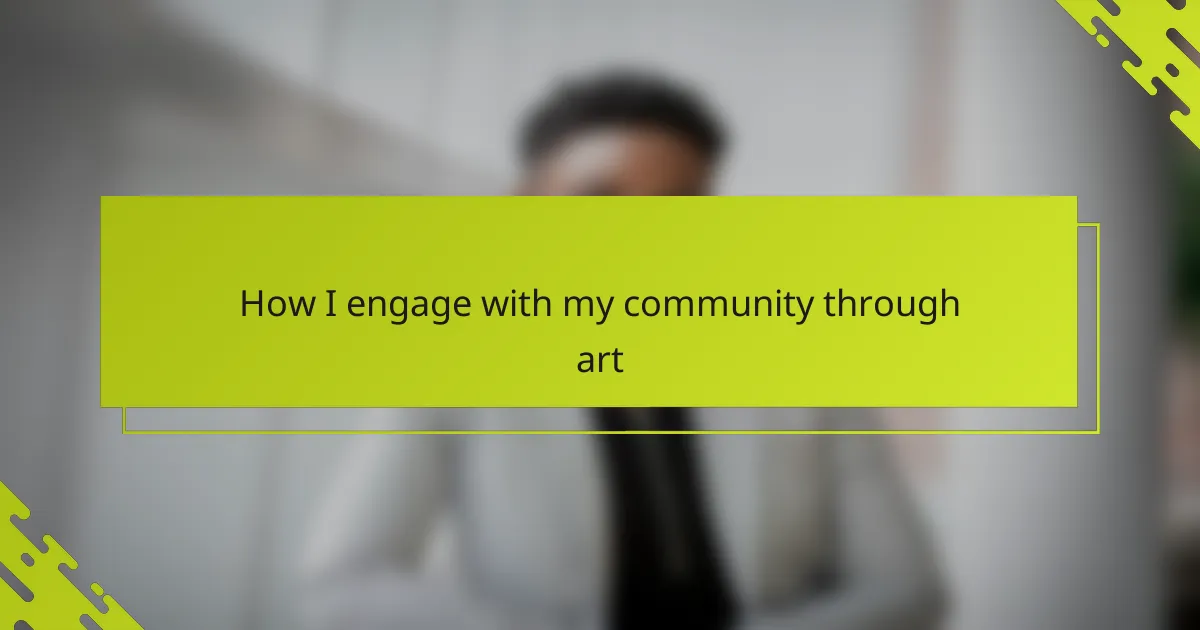Key takeaways
- Queer women culture is defined by diverse experiences, identities, and community support, emphasizing connection and resilience.
- Art serves as a powerful tool for community engagement, promoting empathy and shared stories among queer women.
- Inclusive art projects and collaborations foster a sense of belonging, balancing openness with structure to honor diverse voices.
- Hosting community events encourages authentic expression and connection, creating lasting relationships and inspiring ongoing creativity.
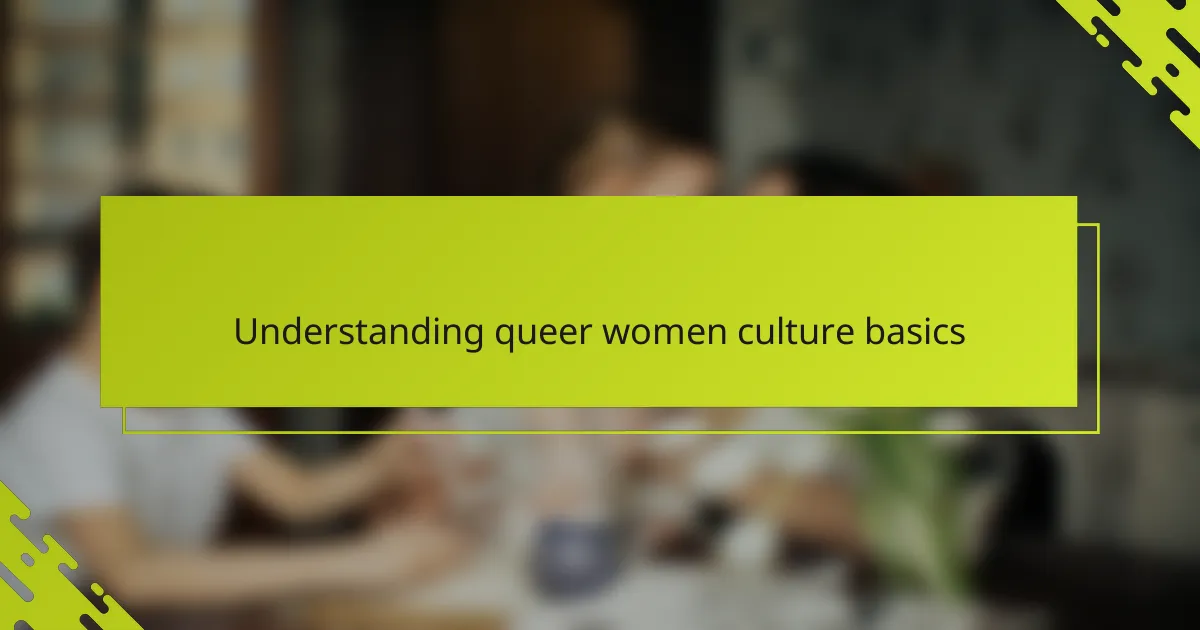
Understanding queer women culture basics
Queer women culture is a rich tapestry woven from diverse experiences, identities, and histories. I’ve found that understanding this culture means recognizing its fluidity—there’s no single way to define what it means to be a queer woman. Have you ever noticed how language and symbols within queer communities carry layers of meaning that outsiders might miss? That’s part of what makes this culture so vibrant and deeply personal.
From my experience, embracing queer women culture involves more than just labels—it’s about connection, resilience, and the creative ways people express themselves. I remember attending a local art show where every piece told a story of struggle and joy tied to queer identity. The emotional resonance in those artworks helped me grasp just how intertwined art and culture really are here.
What strikes me most is the sense of community that forms around shared experiences, yet allows space for individuality. How often do we stop to appreciate the subtle ways queer women support and uplift each other? Understanding these basics isn’t just intellectual—it’s a lived experience filled with empathy, creativity, and a unique kind of strength.
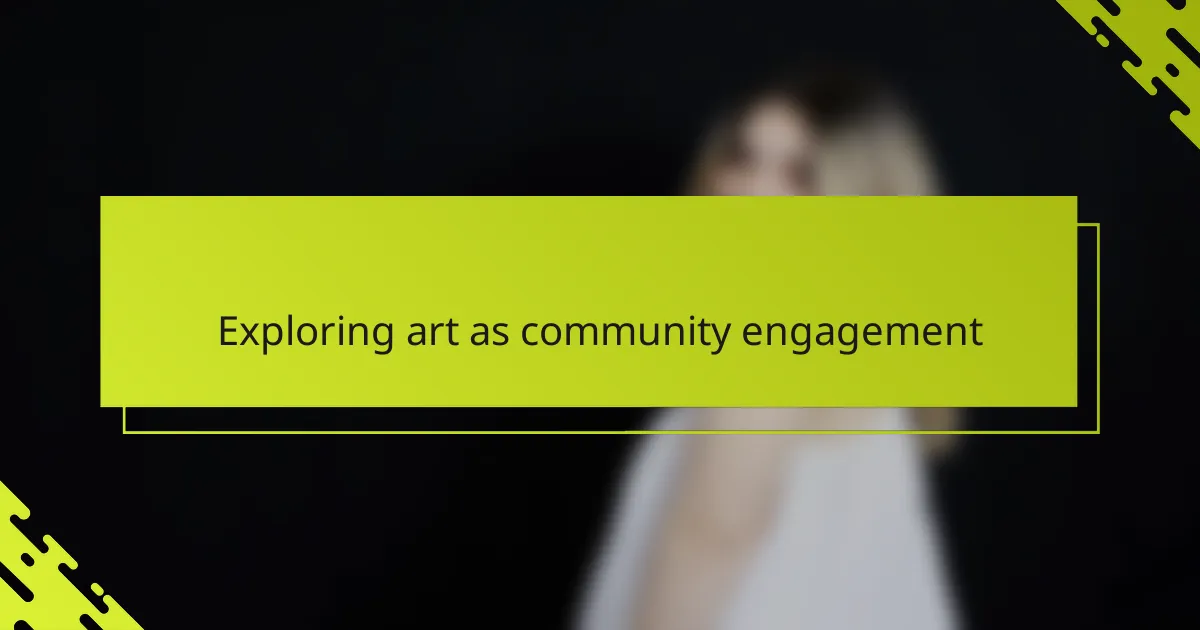
Exploring art as community engagement
Art has this incredible ability to bring people together in ways words sometimes can’t. When I organize community art projects, I see how creativity becomes a common language, breaking down barriers and inviting honest conversations. Have you ever noticed how a shared brushstroke or a collective mural can ignite connections that feel both intimate and powerful?
In my experience, exploring art as community engagement means more than just creating—it’s about listening and reflecting. Each piece I encounter tells a story, often revealing struggles and triumphs that resonate beyond the canvas. This process makes me more aware of how art nurtures empathy and solidarity within our queer women community.
Sometimes, I wonder why we don’t use art more intentionally to cultivate belonging. From poetry readings to collaborative installations, these spaces invite vulnerability and celebrate our diverse identities. It’s in these moments that I truly feel the heartbeat of our community, vibrant and alive through creative expression.

Identifying themes in queer women art
When I look closely at queer women’s art, certain themes always catch my eye—identity, resilience, and the reclaiming of space. Have you noticed how many pieces explore the tensions between visibility and invisibility? This push and pull feels so raw and honest, reflecting the complex ways queer women navigate the world.
What moves me most is how these artworks often blend personal stories with collective histories. I remember a painting that depicted fragmented portraits woven together—each shard telling a different experience of love, loss, and hope. That kind of layered storytelling invites us to see not just individual journeys but our shared strength too.
I often ask myself, what makes these themes so resonant? Maybe it’s because they speak to the universal human need to be seen and understood, especially when mainstream narratives erase or simplify queer women’s lives. In this way, art becomes a powerful mirror and a bridge—reflecting who we are while connecting us deeply to one another.
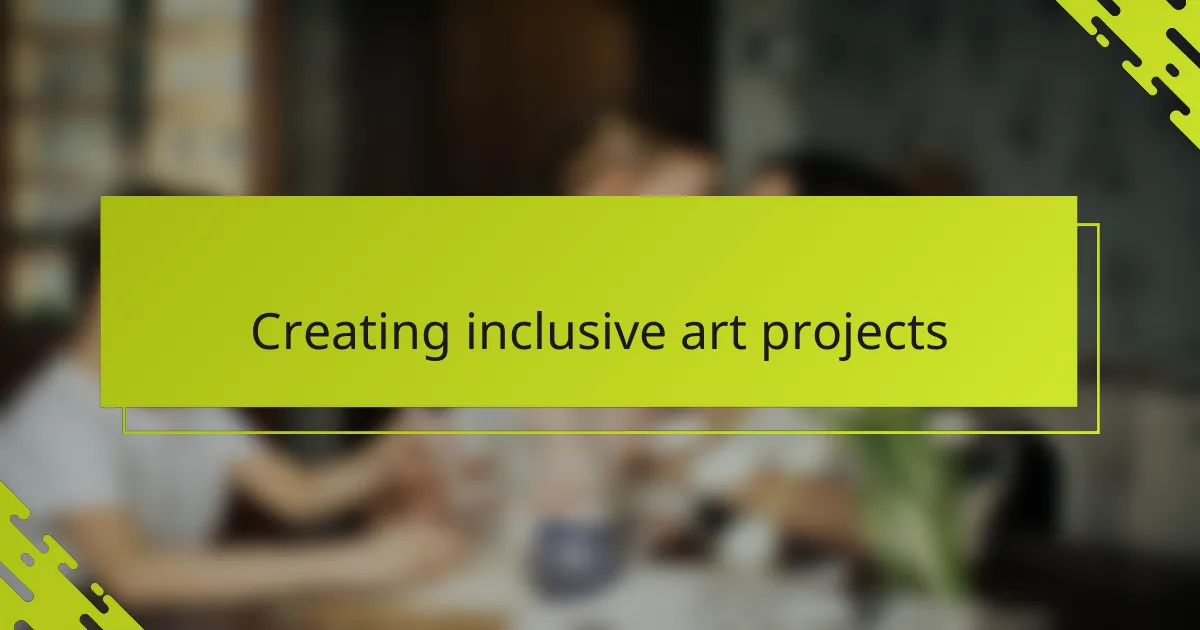
Creating inclusive art projects
Creating inclusive art projects means intentionally crafting spaces where everyone feels seen and valued. I’ve found that inviting participants to share their stories—no matter how diverse—turns a simple project into a collective act of affirmation. Have you ever noticed how a single welcoming prompt can open up a world of expression, encouraging voices that might otherwise stay quiet?
One project I led involved a community mural where people added symbols meaningful to their queer identities. The way the mural grew, layer by layer, felt like witnessing a living tapestry of our shared experiences and differences. This process taught me that inclusivity isn’t just about representation—it’s about honoring complexity and creating belonging through collaboration.
What’s challenging, but also rewarding, is balancing the need for structure with openness. Too rigid, and creativity can shrink; too loose, and some voices risk being overshadowed. How do we hold space for everyone authentically? I think by continuously listening, adapting, and trusting that our community’s diversity is our greatest strength.

Collaborating with queer women artists
Collaborating with queer women artists has been one of the most transformative parts of my creative journey. I recall a project where each artist brought their own style and story, and the energy in the room was electric—like we were weaving our experiences into something bigger than ourselves. Have you ever felt that rush when different voices find harmony in shared intention?
Working alongside these artists challenges me to rethink my own perspectives. Their courage to express vulnerability through their work inspires me to push boundaries and embrace discomfort as a space for growth. It’s in these collaborations that I see resilience and creativity amplify, creating a ripple effect within our community.
What I appreciate most is the trust that develops when we create together. It’s not just about merging talents but about holding space for identity, memory, and rebellion in every brushstroke or verse. These moments remind me why collective art isn’t just expression—it’s a form of resistance and care.
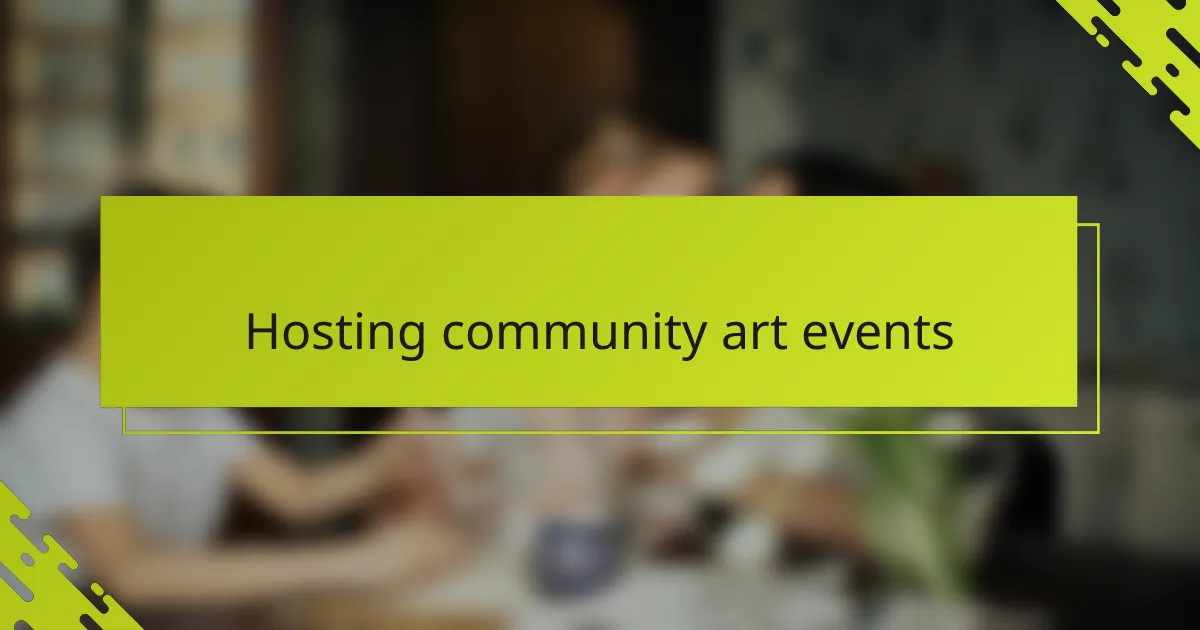
Hosting community art events
Hosting community art events has been a way for me to create spaces where queer women can come together and share not just their art, but their stories. I remember coordinating a small gallery night where local artists displayed pieces that spoke to identity and resilience; the connections formed that evening felt more like a gathering of chosen family than just attendees at an event. Have you ever noticed how a shared space dedicated to expression can dissolve barriers almost instantly?
What I find most powerful about hosting these events is witnessing the ripple effect—they often inspire participants to open up and engage more deeply with one another. It’s not just about showcasing art; it’s about fostering dialogue and creating a real sense of belonging. Once, after an open mic night infused with visual art and poetry, I watched conversations spark into plans for future projects and collaborations, reminding me that community art is truly a living, breathing organism.
Of course, there’s always the challenge of making these events accessible and inclusive. I ask myself, how can I ensure that everyone feels safe to express themselves authentically? Over time, I’ve learned to prioritize transparency, adaptability, and creating clear communication channels—because the success of these gatherings depends on a foundation of trust as much as creativity.
